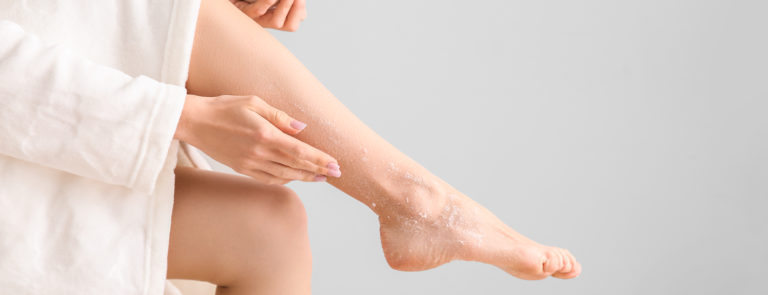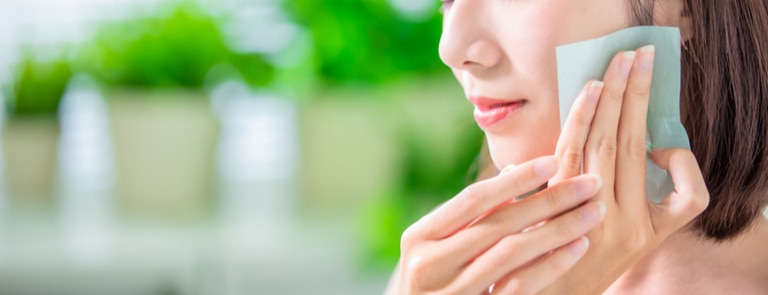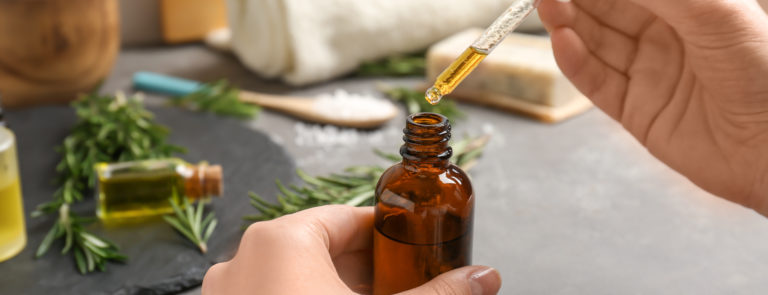10% off £35
Code:SAVE
How to get rid of dead skin

Unfortunately, when skin cells die, they don’t leave on their own. Instead, they sit on top of living skin cells. Find out how to best get rid of them here
Your body’s covered from head to toe in skin cells, but not all of those skin cells are alive. Unfortunately, when skin cells die, they don’t leave on their own. Instead, they sit on top of living skin cells. When dead skin cells rest on alive ones, they create a whole host of problems, including clogged pores – which increase your chance of developing blackheads and spots. In this article, we’ll explain how to get rid of dead skin on your face. Not only that, but we’ll advise how you can prevent dead skin before it causes any issues.
What causes dead skin?
Old skin dying is a normal part of the regeneration cycle. Once skin cells reach around 30 days old, they die, and a new skin cell replaces them.
How to get rid of dead skin
Exfoliation is the best way to remove the dead skin cells and reveal the fresh, bright new skin below. There are different ways you can exfoliate, which we’ll discuss in a moment, but no matter which way you choose, follow these steps to get the best results:
- Use an exfoliator that’s been specifically formulated for the face
- Wash the face before exfoliating
- Don’t apply exfoliator around your eyes or lips
These common exfoliators are the best ways to remove dead skin at home:
- Exfoliating face cloth. Apply your regular cleanser and remove it with an exfoliating face cloth (muslin works particularly well) to remove dead skin cells as you cleanse.
- Facial scrubs. Face scrubs are perhaps the most popular way of exfoliating at home. However, take more care with scrubs that contain harder particles such as nuts as these can be harsh on the skin. Choose face scrubs which have sugar or salt as the main ingredients, as they’re gentle on the skin, thanks to how those minerals dissolve.
- AHAs. Alpha Hydroxy Acids are an exfoliating ingredient used in many exfoliating toners. AHAs dissolve the dead skin on top of the face, revealing new cells underneath. However, AHAs must be used in conjunction with SPFs as they increase your sensitivity to UVA rays.
- BHAs. Beta Hydroxy Acids are a powerful exfoliating ingredient. BHAs penetrate pores for deep exfoliation and are best for sensitive skin types. As they don’t increase your propensity toward sun damage, they don’t need to be used with SPFs.
- Retinol. Retinol is a potent chemical exfoliant that’s used to manage skin ageing and is best suited to women over 30. Because retinol is a powerful active chemical, you’re always advised to use another chemical exfoliant first, to improve your skin’s tolerance. Always do a patch test at least 48 hours before using retinol for the first time. You must apply daily SPF whilst using retinol.
How to prevent dead skin
Prevent dead skin from developing on the face by exfoliating at least twice a week. Chemical exfoliants are the least damaging to the dermis, but if your skin’s sensitive, use a BHA toner to reduce your risk of sun damage.
Related Articles
Shop by wellness goal
Sign up for exclusive offers
Plus, get expert advice to support your health & wellness straight to your inbox when you sign up to Holland & Barrett emails.
Read our
privacy policy














